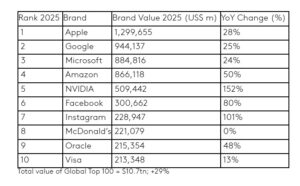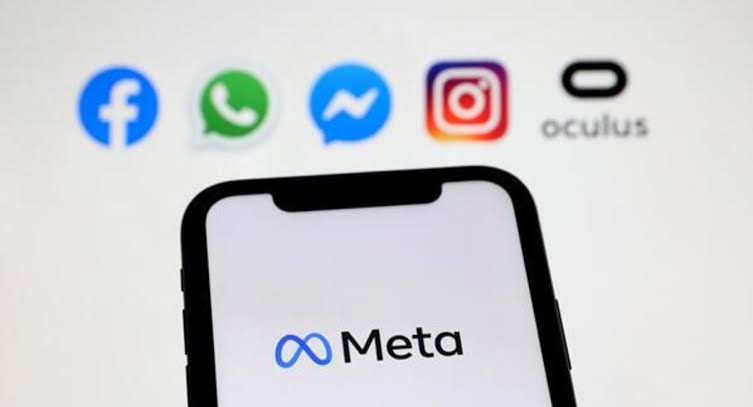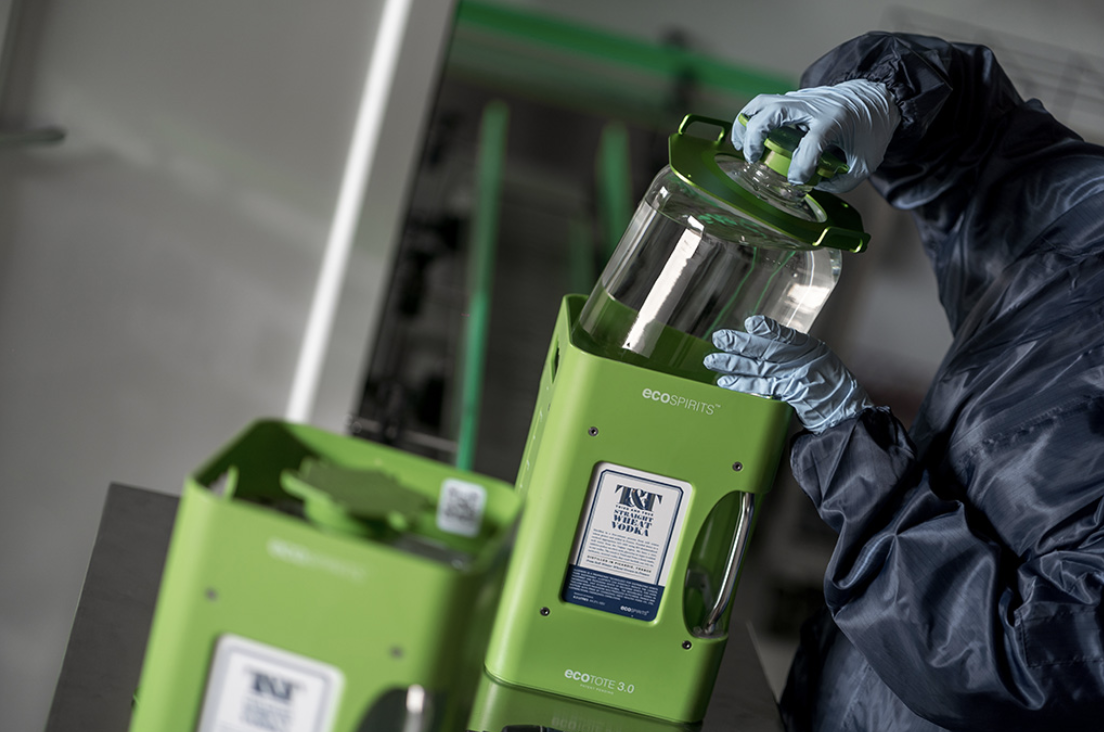In an era defined by digital overload and high consumer expectations, brands should go beyond fulfilling needs but also build emotional connections and deliver unique value to stand out.
The success of brands like Apple, Instagram, and Amazon illustrates the impact of a consistent, relatable brand experience. Brand building revolves around creating exposure and delivering meaningful experiences.
The most successful brands maintain consistent messaging and understand the intangible value they hold in consumers’ minds.
Savvy businesses go a step further by differentiating their brands so effectively that consumers are willing to pay a premium. This enables them to withstand price increases without losing demand, an essential strategy for preserving profit margins amid external pressures.
According to Kankar BrandZ report, the global top 100 has achieved a record-high total brand value of $10.7 trillion, marking a 29% increase over the year. A growth that has been largely fueled by tech-driven disruptor brands, which have contributed the most to brand value gains across all industries over the past two decades.
Since its inception in 2006, tech-enabling brands have taken the forefront in the Global Top 100 brands, and they have contributed the largest share of value growth across all sectors over the past two decades.
The world’s leading brand ranking is not only based on consumer perceptions about the brand but also on its financial performance.
Apple has a brand value of $1.3 trillion, hence, it retains its top position for the fourth year. It represents more than 12% of the total value of the Global Top 100, while Amazon’s brand value has surged by 50% to $866 billion, driven by its strong emphasis on convenience and affordability, which has enabled it to flourish despite economic challenges.
Meanwhile, Instagram and TikTok have shown remarkable growth, respectively, highlighting the ongoing power of social media in shaping consumer behaviour and supporting global direct-to-consumer e-commerce for both brands and influencers.
Nearly 71% of the $9.3 trillion in value added to the Global Top 100 since 2006 has come from brands that either disrupted their industry or reinvented themselves.
Read also: Google pitches AI search and video to advertisers
In 2025, this includes Stripe and Chipotle, which have made their debut in the ranking at 85th and 86th places, respectively, as well as Aldi, which has been part of the Global Top 100 for 15 out of the last 20 years and is currently ranked 94th.
In the report, U.S. brands represent 82% of the total value of the Global Top 100, a significant rise from 63% in 2006. Over the past two decades, Chinese brands have doubled their value and now make up 6% of the total. These gains have largely come at the cost of European brands, whose share has dropped to just 7%, down from 26% in 2006.
Martin Guerrieria, head of Kantar Brand Z, noted that “Even through economic crises, the world’s most valuable brands have consistently outperformed the S&P 500 and MSCI World Index over 20 years. This is irrefutable proof of marketing’s value”, he said.
Outside the US, notable progress has been made by several international brands: Sweden’s Spotify re-entered the Global Top 100 at 76; India’s Airtel emerged as the world’s fastest-growing telecom brand; Argentina’s Mercado Libre became the only Latin American brand in the Top 100; Spain’s Zara climbed five spots to rank 65th; and Canada’s RBC achieved the highest year-over-year brand value growth (43%) among financial services brands outside the US.
Also Watch:MARKETING EDGE ONTV









Comment
No comments found.